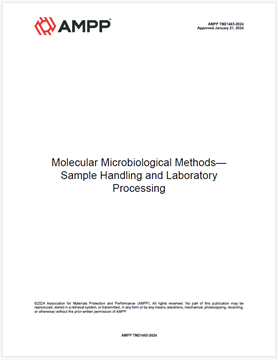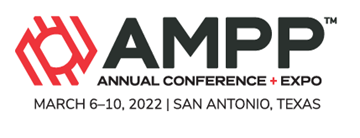Search
Products tagged with 'molecular microbiological methods'
View as
Sort by
Display
per page
AMPP TM21465-2024, Molecular Microbiological Methods - Sample Handling and Laboratory Processing
Product Number:
AMPP TM21465-2024
Publication Date:
2024
$109.00
Microbiologically Influenced Corrosion In Drinking Water Pipelines – Old Deposits Or Active Process?
Product Number:
51322-18068-SG
Publication Date:
2022
$20.00


